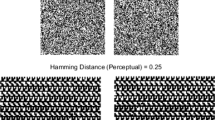Abstract
Ever since the broad availability of efficient source coding methods (data reduction) and digital distribution channels (including the Internet), consumers have seamless access to an enormous amount of multimedia data. This includes audio material and still and moving pictures within a wide range of quality, ranging from “pre-view” (e.g. Internet radio) to broadcast quality. As a result, efficient handling of this considerable amount of data has become a challenge of its own (e.g. “how can I find desired material efficiently?”). This has led to the definition of a number of so-called metadata standards. Examples for such specifications include the Dublin Core initiative, the SMPTE/EBU Dynamic Metadata Dictionary, the P/Meta project of the European Broadcasting Union (EBU) and, more recently, the MPEG-7 standard. The general idea behind these standards is to define data formats which provide a comprehensive description of the actual multimedia content in an interoperable way. Such meta-data (i.e. “data about data”) structures may include a wide range of descriptions of the origin and identity of the content, its structure, usage rules, and various perceptual or semantic aspects.
Access this chapter
Tax calculation will be finalised at checkout
Purchases are for personal use only
Preview
Unable to display preview. Download preview PDF.
Similar content being viewed by others
Author information
Authors and Affiliations
Editor information
Editors and Affiliations
Rights and permissions
Copyright information
© 2003 Springer-Verlag Berlin Heidelberg
About this chapter
Cite this chapter
Herre, J. (2003). Content Based Identification (Fingerprinting). In: Becker, E., Buhse, W., Günnewig, D., Rump, N. (eds) Digital Rights Management. Lecture Notes in Computer Science, vol 2770. Springer, Berlin, Heidelberg. https://doi.org/10.1007/10941270_7
Download citation
DOI: https://doi.org/10.1007/10941270_7
Publisher Name: Springer, Berlin, Heidelberg
Print ISBN: 978-3-540-40465-1
Online ISBN: 978-3-540-45038-2
eBook Packages: Springer Book Archive




